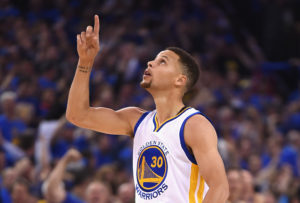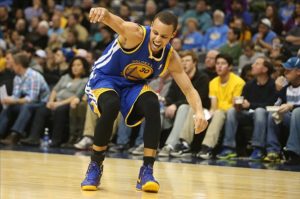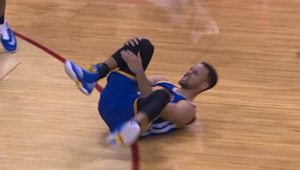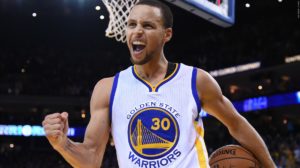 In 2009 Hines Ward underwent PRP treatment for an MCL injury hoping that this would help accelerate his recovery and enable him to play in the Super Bowl 2 weeks later. He did in fact recover quickly and started the game and made a 40 yard play on the second play of the game and helped the Steelers go on to win the Super Bowl.
In 2009 Hines Ward underwent PRP treatment for an MCL injury hoping that this would help accelerate his recovery and enable him to play in the Super Bowl 2 weeks later. He did in fact recover quickly and started the game and made a 40 yard play on the second play of the game and helped the Steelers go on to win the Super Bowl.
Seven years later the efficacy of PRP treatment still remains somewhat controversial in the medical literature, yet Stephen Curry is now poised to once again show the potential healing power of PRP on the world stage of the NBA playoffs. In order to see how this might happen we need to first understand the nature of the knee injury.
Steph Curry Using PRP for MCL Injury of the Knee
I have not examined nor treated either Hines Ward or Stephen Curry for their knee injuries but per reports they both sustained an MCL injury of the knee. The MCL (medial collateral ligament) is one of the four main ligaments of the knee that helps to stabilize the knee.
The MCL specifically stabilizes the medial (or inside) portion of the knee. Thus it serves to resist rotational forces and lateral to medial forces and prevents the knee from giving out especially with pivoting, twisting and jumping. For Curry to be able to perform as Curry, he would need a functional and fairly pain-free MCL.
More Details About MCL Injuries
When the MCL is injured the actual fibers of the ligament are stretched and torn. In this sense, spraining the ligament and tearing or stretching of the ligament are synonymous. Depending on how many of the fibers of the ligament are stretched and torn, this will determine the severity of the MCL sprain.
 Grade 1 sprains (such as in Curry’s case) will have minimal stretching and tearing involving only a portion of the MCL and may cause pain, swelling and weakening of the ligament but the integrity of the ligament is still intact as most of the ligament fibers are unharmed.
Grade 1 sprains (such as in Curry’s case) will have minimal stretching and tearing involving only a portion of the MCL and may cause pain, swelling and weakening of the ligament but the integrity of the ligament is still intact as most of the ligament fibers are unharmed.
Grade 2 or 3 injuries are more severe and may involve damage to many of the fibers (partial tear) or all of the fibers (complete tear, i.e. rupture). Grade 2 or 3 injuries may require 8-12 weeks to heal (or sometimes even longer) whereas a grade 1 injury would require less healing time.
When the injury occurs, the patient may experience pain and swelling and stiffness and possible instability of the joint. Many of the modalities of physical therapy and rehab such as ice, ultrasound, electrical stimulation and therapeutic exercises are aimed to try and control these symptoms and improve the function of the joint.
But ultimately the torn ligament fibers need to heal on their own. They heal by recruiting platelets in the bloodstream to the injured area which then release growth factors to further aid in healing and recruiting stem cells to provide even further healing. Ultimately new collagen fibers need to form to completely heal the ligament. This process occurs naturally but it does take time.
The theory behind PRP treatment for an acute injury like this would be to speed up this healing process.
Where Does PRP Come Into Play?
 PRP treatment involves taking the patient’s own blood and separating out the portion of the blood that is rich in platelets. This can be performed by spinning the blood and separating out the middle layer (buffy coat). This layer which is rich in platelets will then be used to create a plasma solution which is now rich with platelets (hence the term “platelet rich plasma”) and will be re-injected into the tear of the ligament.
PRP treatment involves taking the patient’s own blood and separating out the portion of the blood that is rich in platelets. This can be performed by spinning the blood and separating out the middle layer (buffy coat). This layer which is rich in platelets will then be used to create a plasma solution which is now rich with platelets (hence the term “platelet rich plasma”) and will be re-injected into the tear of the ligament.
Thus, although the ligament may have the ability to heal itself, by injecting significantly more platelets (anywhere from 2-20 times normal concentrations) we can provide many more growth factors to accelerate the healing process and grow more collagen fibers more quickly to heal the ligament.
There still remains much debate about what exactly is the best concentration of platelets to use (more may be better but too many may not be) and whether white blood cells or red blood cells that can be added to or removed from the PRP preparation may be helpful or may be hurtful. This is why PRP treatment is still an evolving science and all PRP preparations are not the same and thus there is such variability in the outcome of the scientific studies.
These concentrations may need to be varied based on which structure is being treated (i.e. ligament, tendon, muscle etc). But if the treatment is done correctly with the most therapeutic type of PRP solution used and accurately injected under ultrasound guidance into the exact location of the torn fibers of the ligament, we would expect that the PRP injection could be very effective in reducing pain and improving the integrity of the ligament to more quickly provide a more functional knee and return the athlete to play quicker than otherwise expected.
The sooner the PRP treatment occurs after the injury, the more benefit in reducing the expected healing time. Thus a grade 1 MCL injury may typically require 4-6 weeks to heal, but with PRP treatment given to Steph Curry on day 2 of his injury, his recovery time might be cut in half, similar to the 2 weeks such as it was with Hines Ward.
Personal Experience with PRP & MCL Injuries
In my own personal experience I have even treated grade 2-3 MCL injuries with PRP and enabled football players to return to play after 2 weeks. However, often times these players will return wearing a hinged knee brace.
 For Steph Curry to wear a hinged knee brace might limit his effectiveness due to the nature of his style of play. So when he returns, what he will be wearing and how well he will perform all still remains to be seen.
For Steph Curry to wear a hinged knee brace might limit his effectiveness due to the nature of his style of play. So when he returns, what he will be wearing and how well he will perform all still remains to be seen.
But given that he is Stephen Curry and this is the playoffs, expect to see him back sooner rather than later. And as goes his performance in the playoffs so too will go the renewed increased interest in the benefits of PRP and other regenerative medicine therapies.
The following piece was written by Dr. Andrew Blecher, one of the top PRP doctors in the nation who practices out of the Southern California area. You can follow Dr. Blecher on Twitter @the_JockDoc
If you are new to PRP and have a specific question, don’t hesitate to “Ask the Doc” and we will get back to you. If you are looking for a PRP doctor in your area, you can find one in our physician directory or contact us and we can put you in touch with a professional near you.

